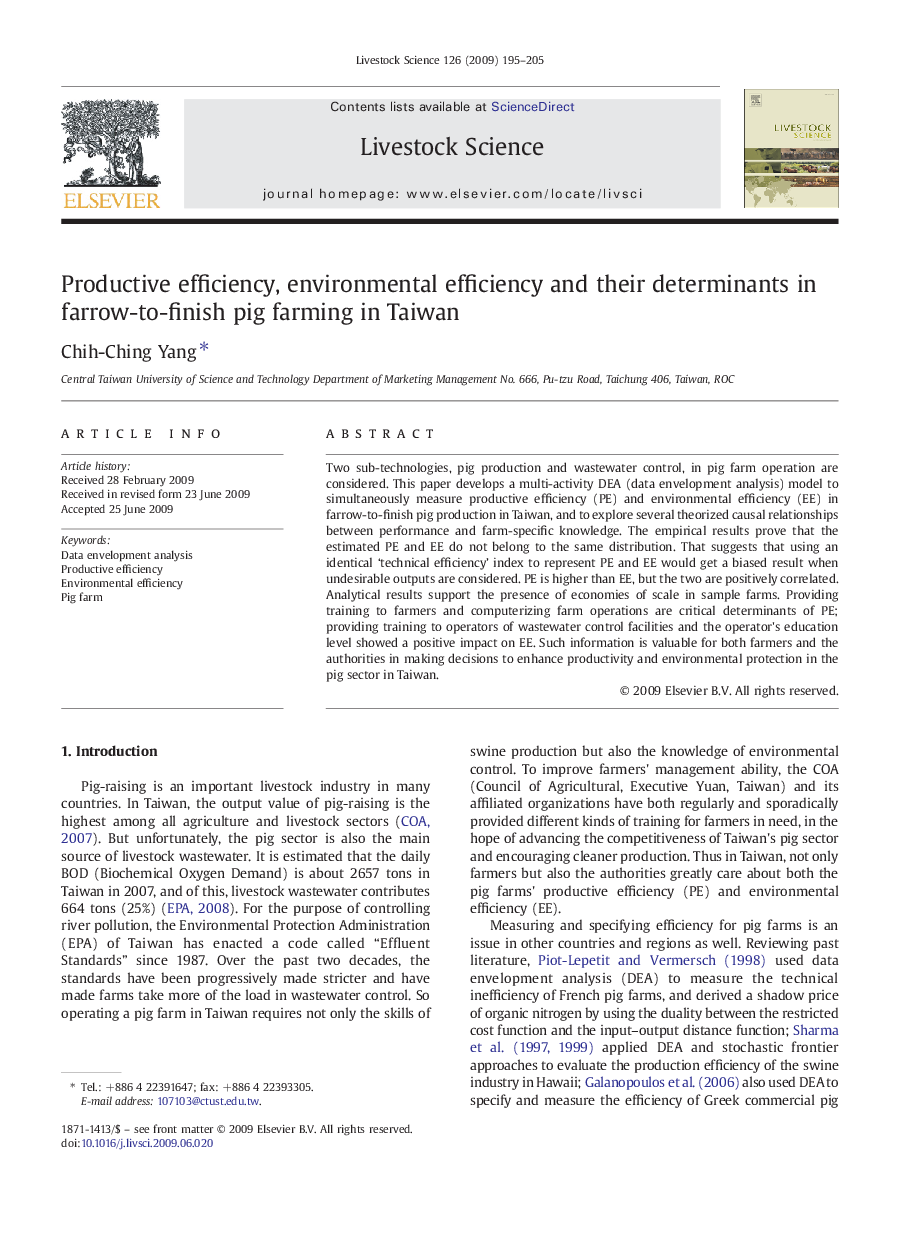| کد مقاله | کد نشریه | سال انتشار | مقاله انگلیسی | نسخه تمام متن |
|---|---|---|---|---|
| 2447939 | 1554006 | 2009 | 11 صفحه PDF | دانلود رایگان |

Two sub-technologies, pig production and wastewater control, in pig farm operation are considered. This paper develops a multi-activity DEA (data envelopment analysis) model to simultaneously measure productive efficiency (PE) and environmental efficiency (EE) in farrow-to-finish pig production in Taiwan, and to explore several theorized causal relationships between performance and farm-specific knowledge. The empirical results prove that the estimated PE and EE do not belong to the same distribution. That suggests that using an identical ‘technical efficiency’ index to represent PE and EE would get a biased result when undesirable outputs are considered. PE is higher than EE, but the two are positively correlated. Analytical results support the presence of economies of scale in sample farms. Providing training to farmers and computerizing farm operations are critical determinants of PE; providing training to operators of wastewater control facilities and the operator's education level showed a positive impact on EE. Such information is valuable for both farmers and the authorities in making decisions to enhance productivity and environmental protection in the pig sector in Taiwan.
Journal: Livestock Science - Volume 126, Issues 1–3, December 2009, Pages 195–205